#costume cabaret
Text

alan cumming in cabaret.
876 notes
·
View notes
Text



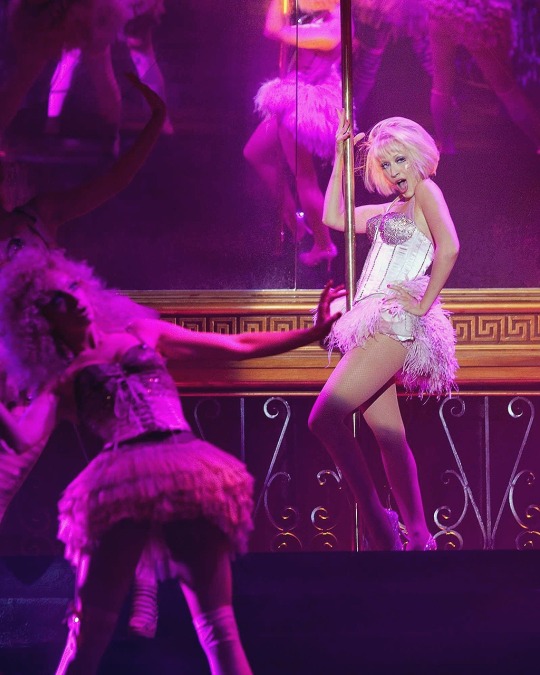

XTINA as Ali Rose in Burlesque (2010)
#christina aguilera#xtina#ali rose#burlesque#musical#10s#vintage#old school#cabaret#icons#2000s#y2k#x#music#aesthetic#xtina aguilera#90s#costume#pink aesthetic#pinkcore#makeup#old hollywood#girly#women#mv#y2kcore#2009#coquette aesthetic#coquette#movie
89 notes
·
View notes
Text

Margo Lion als Nofretete in der Revue von Friedrich Hollaender Quick, 19.9.1930. Fotograf: Binder
view more on wordPress
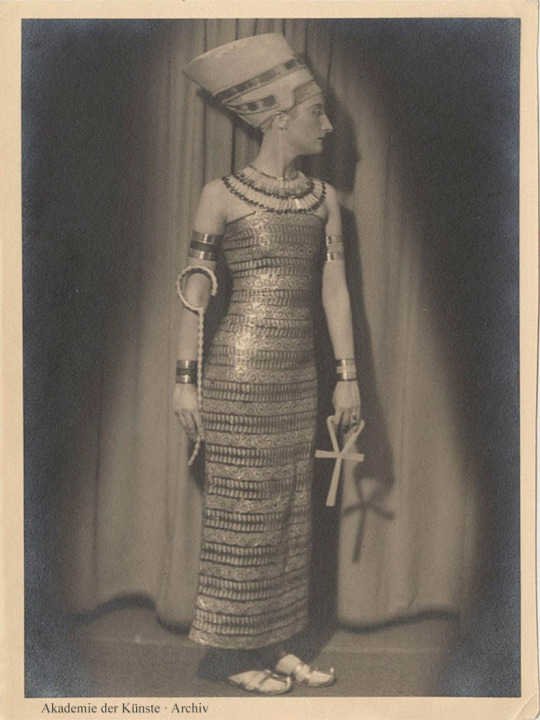
Margo Lion as Nefertiti in Nelson's revue Quick, 19.9.1930. Photo: Mundophot
src Akademie der Künste Archiv
view more on wordPress
related post
#margo lion#nefertiti#atelier binder#role portrait#Rollenfoto#Rollenporträt#1930#weimarer republik#weimar republic#weimar era#quick#revue artist#Kabarett#cabaret artist#women artists#neue frau#new woman#egyptian costume#binder#alexander binder#nofretete
48 notes
·
View notes
Text
The Untold History of Cabaret: Revived and Kicking
As Broadway welcomes the ever-evolving musical, its star, Eddie Redmayne—along with Liza Minnelli, Joel Grey, and Sam Mendes—assess its enduring power.
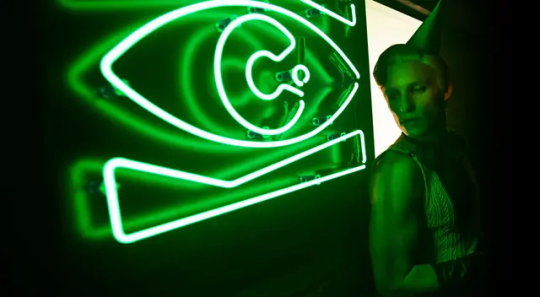
As director Rebecca Frecknall was rehearsing a new cast for her hit London revival of Cabaret, the actor playing Clifford Bradshaw, an American writer living in Berlin during the final days of the Weimar Republic, came onstage carrying that day’s newspaper as a prop. It happened to be Metro, the free London tabloid commuters read on their way to work. The date was February 25, 2022. When the actor said his line—“We’ve got to leave Berlin—as soon as possible. Tomorrow!”—Frecknall was caught short. She noticed the paper’s headline: “Russia Invades Ukraine.”
Cabaret, the groundbreaking 1966 Broadway musical that tackles fascism, antisemitism, abortion, World War II, and the events leading up to the Holocaust, had certainly captured the times once again.
Back in rehearsals four months later, Frecknall and the cast got word that the Supreme Court had overturned Roe v. Wade. Every time she checks up on Cabaret, “it feels like something else has happened in the world,” she told me over coffee in London in September.
A month later, as Frecknall was preparing her production of Cabaret for its Broadway premiere, something else did happen: On October 7, Hamas terrorists infiltrated Israel, killing at least 1,200 people and taking more than 240 hostages.
The revival of Cabaret—starring Eddie Redmayne as the creepy yet seductive Emcee; Gayle Rankin as the gin-swilling nightclub singer Sally Bowles; and Bebe Neuwirth as Fraulein Schneider, a landlady struggling to scrape by—opens April 21 at Manhattan’s August Wilson Theatre. It will do so in the shadow of a pogrom not seen since the Einsatzgruppen slaughtered thousands of Jews in Eastern Europe and in the shadow of a war between Israel and Hamas that continues into its fifth month, with the killing of thousands of civilians in Gaza.
Nearly 60 years after its debut, Cabaret still stings. That is its brilliance. And its tragedy.
Redmayne has been haunted by Cabaret ever since he played the Emcee in prep school. “I was staggered by the character,” he says. “The lack of definition of it, the enigma of it.” He played the part again during his first year at Cambridge at the Edinburgh Fringe Festival, where nearly 3,500 shoestring productions jostle for attention each summer. Cabaret, performed in a tiny venue that “stank,” Redmayne recalls, did well enough that the producers added an extra show. He was leering at the Kit Kat Club girls from 8 p.m. till 10 p.m. and then from 11 p.m. till two in the morning. “You’d wake up at midday. You barely see sunshine. I just became this gaunt, skeletal figure.” His parents came to see him and said, “You need vitamin D!”
In 2021, Redmayne, by then an Oscar winner for The Theory of Everything and a Tony winner for Red, was playing the Emcee again, this time in Frecknall’s West End production. His dressing room on opening night was full of flowers. There was one bouquet with a card he did not have a chance to open until intermission. It was from Joel Grey, who originated the role on Broadway and won an Oscar for his performance alongside Liza Minnelli in the 1972 movie. He welcomed the young actor “to the family,” Redmayne says. “It was an extraordinary moment for me.”
Cabaret is based on Goodbye to Berlin, the British writer Christopher Isherwood’s collection of stories and character studies set in Weimar Germany as the Nazis are clawing their way to power. Isherwood, who went to Berlin for one reason—“boys,” he wrote in his memoir Christopher and His Kind—lived in a dingy boarding house amid an array of sleazy lodgers who inspired his characters. But aside from a fleeting mention of a host at a seedy nightclub, there is no emcee in his vignettes. Nor is there an emcee in I Am a Camera, John Van Druten’s hit 1951 Broadway play adapted from Isherwood’s story “Sally Bowles” from Goodbye to Berlin.
The character, one of the most famous in Broadway history, was created by Harold Prince, who produced and directed the original Cabaret. “People write about Cabaret all the time,” says John Kander, who composed the show’s music and is, at 96, the last living member of that creative team. “They write about Liza. They write about Joel, and sometimes about us [Kander and lyricist Fred Ebb]. None of that really matters. It’s all Hal. Everything about this piece, even the variations that happen in different versions of it, is all because of Hal.”
In 1964, Prince produced his biggest hit: Fiddler on the Roof. In the final scene, Tevye and his family, having survived a pogrom, leave for America. There is sadness but also hope. And what of the Jews who did not leave? Cabaret would provide the tragic answer.
But Prince was after something else. Without hitting the audience over the head, he wanted to create a musical that echoed what was happening in America: young men being sent to their deaths in Vietnam; racists such as Alabama politician “Bull” Connor siccing attack dogs on civil rights marchers. In rehearsals, Prince put up Will Counts’s iconic photograph of a white student screaming at a Black student during the Little Rock crisis of 1957. “That’s our show,” he told the cast.
A bold idea he had early on was to juxtapose the lives of Isherwood’s lodgers with one of the tawdry nightclubs Isherwood had frequented. In 1951, while stationed as a soldier in Stuttgart, Germany, Prince himself had hung around such a place. Presiding over the third-rate acts was a master of ceremonies in white makeup and of indeterminate sexuality. He “unnerved me,” Prince once told me. “But I never forgot him.”
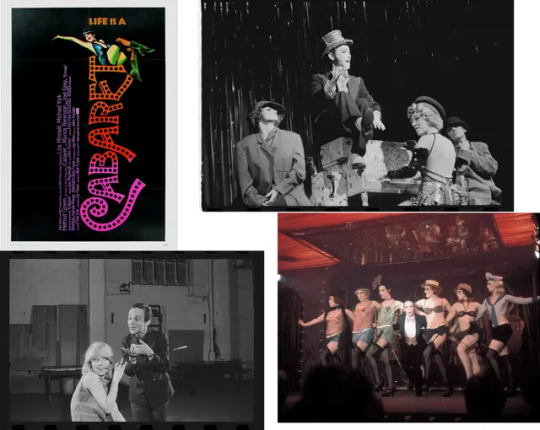
Kander had seen the same kind of character at the opening of a Marlene Dietrich concert in Europe. “An overpainted little man waddled out and said, ‘Willkommen, bienvenue, welcome,’ ” Kander recalls.
The first song Kander and Ebb wrote for the show was called “Willkommen.” They wrote 60 more songs. “Some of them were outrageous,” Kander says. “We wrote some antisemitic songs”—of which there were many in Weimar cabarets—“ ‘Good neighbor Cohen, loaned you a loan.’ We didn’t get very far with that one.”
They did write one song about antisemitism: “If You Could See Her (The Gorilla Song),” in which the Emcee dances with his lover, a gorilla in a pink tutu. At the end of the number, he turns to the audience and whispers: “If you could see her through my eyes, she wouldn’t look Jewishhh at all.” It was, they thought, the most powerful song in the score.
The working title of their musical was Welcome to Berlin. But then a woman who sold blocks of tickets to theater parties told Prince that her Jewish clients would not buy a show with “Berlin” in the title. Strolling along the beach one day, Joe Masteroff, who was writing the musical’s book, thought of two recent hits, Carnival and Camelot. Both started with a C and had three syllables. Why not call the show Cabaret?
To play the Emcee, Prince tapped his friend Joel Grey. A nightclub headliner, Grey could not break into Broadway. “The theater was very high-minded,” he once said. When Prince called him, he was playing a pirate in a third-rate musical in New York’s Jones Beach. “Hal knew I was dying,” Grey recounts over lunch in the West Village, where he lives. “I wanted to quit the business.”
At first, he struggled to create the Emcee, who did not interact with the other characters. He had numbers but “no words, no lines, no role,” Grey wrote in his memoir, Master of Ceremonies. A polished performer, he had no trouble with the songs, the dances, the antics. “But something was missing,” he says. Then he remembered a cheap comedian he’d once seen in St. Louis. The comic had told lecherous jokes, gay jokes, sexist jokes—anything to get a laugh. One day in rehearsal, Grey did everything the comedian had done “to get the audience crazy. I was all over the girls, squeezing their breasts, touching their bottoms. They were furious. I was horrible. When it was over I thought, This is the end of my career.” He disappeared backstage and cried. “And then from out of the darkness came Mr. Prince,” Grey says. “He put his hand on my shoulder and said, ‘Joely, that’s it.’ ”
Cabaret played its first performance at the Shubert Theatre in Boston in the fall of 1966. Grey stopped the show with the opening number, “Willkommen.” “The audience wouldn’t stop applauding,” Grey recalls. “I turned to the stage manager and said, ‘Should I get changed for the next scene?’ ”
The musical ran long—it was in three acts—but it got a prolonged standing ovation. As the curtain came down, Richard Seff, an agent who represented Kander and Ebb, ran into Ebb in the aisle. “It’s wonderful,” Seff said. “You’ll fix the obvious flaws.” In the middle of the night, Seff’s phone rang. It was Ebb. “You hated it!” the songwriter screamed. “You are of no help at all!”
Ebb was reeling because he’d learned Prince was going to cut the show down to two acts. Ebb collapsed in his hotel bed, Kander holding one hand, Grey the other. “You’re not dying, Fred,” Kander told him. “Hal has not wrecked our show.”
Cabaret came roaring into New York, fueled by tremendous word of mouth. But there was a problem. Some Jewish groups were furious about “If You Could See Her.” How could you equate a gorilla with a Jew? they wanted to know, missing the point entirely. They threatened to boycott the show. Prince, his eye on ticket sales, told Ebb to change the line “She wouldn’t look Jewish at all” to something less offensive: “She isn’t a meeskite at all,” using the Yiddish word for a homely person.
It is difficult to imagine the impact Cabaret had on audiences in 1966. World War II had ended only 21 years before. Many New York theatergoers had fled Europe or fought the Nazis. There were Holocaust survivors in the audience; there were people whose relatives had died in the gas chambers. Grey knew the show’s power. Some nights, dancing with the gorilla, he’d whisper “Jewish” instead of “meeskite.” The audience gasped.

Cabaret won eight Tony Awards in 1967, catapulted Grey to Broadway stardom, and ran for three years. Seff sold the movie rights for $1.5 million, a record at the time. Prince, about to begin rehearsals for Stephen Sondheim’s Company, was unavailable to direct the movie, scheduled for a 1972 release. So the producers hired the director and choreographer Bob Fosse, who needed the job because his previous movie, Sweet Charity, had been a bust.
Fosse, who saw Prince as a rival, stamped out much of what Prince had done, including Joel Grey. He wanted Ruth Gordon to play the Emcee. But Grey was a sensation, and the studio wanted him. “It’s either me or Joel,” Fosse said. When the studio opted for Grey, Fosse backed down. But he resented Grey, and relations between them were icy.
A 26-year-old Liza Minnelli, on the way to stardom herself, was cast as Sally Bowles. The handsome Michael York would play the Cliff character, whose name in the movie was changed to Brian Roberts. And supermodel Marisa Berenson (who at the time seemed to be on the cover of Vogue every other month) got the role of a Jewish department store heiress, a character Fosse took from Isherwood’s short story “The Landauers.”
Cabaret was shot on location in Munich and Berlin. “The atmosphere was extremely heavy,” Berenson recalls. “There was the whole Nazi period, and I felt very much the Berlin Wall, that darkness, that fear, all that repression.” She adored Fosse, but he kept her off balance (she was playing a young woman traumatized by what was happening around her) by whispering “obscene things in my ear. He was shaking me up.”
Minnelli, costumed by Halston for the film, found Fosse “brilliant” and “incredibly intense,” she tells Vanity Fair in a rare interview. “He used every part of me, including my scoliosis. One of my great lessons in working with Fosse was never to think that whatever he was asking couldn’t be done. If he said do it, you had to figure out how to do it. You didn’t think about how much it hurt. You just made it happen.”
Back in New York, Fosse arranged a private screening of Cabaret for Kander and Ebb. When it was over, they said nothing. “We really hated it,” Kander admits. Then they went to the opening at the Ziegfeld Theatre in New York. The audience loved it. “We realized it was a masterpiece,” Kander says, laughing. “It just wasn’t our show.”
“PAPA WAS EVEN MORE EXCITED ABOUT THE OSCAR THAN I WAS,” SAYS LIZA MINNELLI. “AND, BABY, I WAS—NO, I AM STILL—EXCITED.”
The success of the movie—with its eight Academy Awards—soon overshadowed the musical. When people thought of Cabaret, they thought of finger snaps and bowler hats. They thought of Fosse and, of course, Minnelli, who would adopt the lyric “Life is a cabaret” as her signature. Her best-actress Oscar became part of a dynasty: Her mother, Judy Garland, and father, director Vincente Minnelli, each had one of their own. “Papa was even more excited about the Oscar than I was,” she says. “And, baby, I was—no, I am still—excited.”
By 1987—in part to burnish Cabaret’s theatrical legacy—Prince decided to recreate his original production on Broadway, with Grey once again serving as the Emcee. But it had the odor of mothballs. The New York Times drama critic Frank Rich wrote that it was not, as Sally Bowles sings, “perfectly marvelous,” but “it does approach the perfectly mediocre.” Much of the show, he added, was “old-fashioned and plodding.”
In the early 1990s, Sam Mendes, then a young director running a pocket-size theater in London called the Donmar Warehouse, heard the novelist Martin Amis give a talk. Amis was writing Time’s Arrow, about a German doctor who works in a concentration camp. “I’ve already written about the Nazis and people say to me, ‘Why are you doing it again?’ ” Amis said. “And I say, what else is there?”
At the end of the day,” Mendes tells me, “the biggest question of the 20th century is, ‘How could this have happened?’ ” Mendes decided to stage Cabaret at the Donmar in 1993. Another horror was unfolding at the time: Serb paramilitaries were slaughtering Bosnian Muslims, “ethnic cleansing” on an unimaginable scale.
Mendes hit on a terrific concept for his production: He transformed his theater into a nightclub. The audience sat at little tables with red lamps. And the performers were truly seedy. He told the actors playing the Kit Kat Club girls not to shave their armpits or their legs. “Unshaved armpits—it sent shock waves around the theater,” he recalls. Since there was no room—or money—for an orchestra, the actors played the instruments. Some of them could hit the right notes.
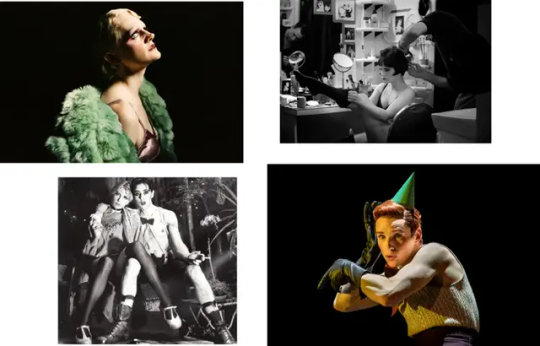
To play the Emcee, Mendes cast Alan Cumming, a young Scottish actor whose comedy act Mendes had enjoyed. “Can you sing?” Mendes asked him. “Yeah,” Cumming said. Mendes threw ideas at him and “he was open to everything.” Just before the first preview, Mendes suggested he come out during the intermission and chat up the audience, maybe dance with a woman. Mendes, frantic before the preview, never got around to giving Cumming any more direction than that. No matter. Cumming sauntered onstage as people were settling back at their tables, picked a man out of the crowd, and started dancing with him. “Watch your hands,” he said. “I lead.”
Cumming’s Emcee was impish, fun, gleefully licentious. The audience loved him. “I have never had less to do with a great performance in one of my shows than I had to do with Alan,” Mendes says.
When Joe Masteroff came to see the show in London, Mendes was nervous. He’d taken plenty of liberties with the script. Cliff, the narrator, was now openly gay. (One night, when Cliff kissed a male lover, a man in the audience shouted, “Rubbish!”) And he made the Emcee a victim of the Nazis. In the final scene, Cumming, in a concentration camp uniform affixed with a yellow Star of David and a pink triangle, is jolted, as if he’s thrown himself onto the electrified fence at Birkenau.
“I should be really pissed with you,” Masteroff told Mendes after the show. “But it works.” Kander liked it too, though he was not happy that the actors didn’t play his score all that well. Ebb hated it. “He wanted more professionalism,” Mendes says. “And he was not wrong. There was a dangerous edge of amateurishness about it.”
The Roundabout Theatre Company brought Cabaret to New York in 1998. Rob Marshall, who would go on to direct the movie Chicago, helped Mendes give the show some Broadway gloss while retaining its grittiness. The two young directors were “challenging each other, pushing each other,” Marshall remembers, “to create something unique.”
Cumming reprised his role as the Emcee. He was on fire. Natasha Richardson, the daughter of Vanessa Redgrave and director Tony Richardson, played Sally Bowles. She was not on fire. She’d never been in a musical before, and when she sang, “There was absolutely no sound coming out,” Kander says.
“She beat herself up about her singing all the time,” Mendes adds. “There was a deep, self-critical aspect of Tash that was instilled by her dad, a brilliant man but extremely cutting.” He once said to her out of nowhere: “We’re going to have to do something about your chin, dear.” As Mendes saw it, she always felt that she could never measure up to her parents.
Kander went to work with her, and slowly a voice emerged. It was not a “polished sound,” Marshall says, but it was haunting, vulnerable. Still, Cumming was walking away with the show. At the first preview, when he took his bow, the audience roared. When Richardson took hers, they were polite. Mendes remembers going backstage and finding her “in tears.” But she persevered and through sheer force of will created a Sally Bowles that “will break your heart,” Masteroff told me the day before I saw that production in the spring of 1998. She did indeed. (Eleven years later, while learning how to ski on a bunny hill on Mont Tremblant, she fell down. She died of a head injury two days later.)
The revival of Cabaret won four Tony Awards, including one for Richardson as best actress in a musical. It ran nearly 2,400 performances at the Roundabout’s Studio 54 and was revived again in 2014. And the money, money, money, as the song goes, poured in. Once Masteroff, having already filed his taxes at the end of a lucrative Cabaret year, went to the mailbox and opened a royalty check for $60,000. “What the hell am I supposed to do with this?” he snapped.
Rebecca Frecknall grew up on Mendes’s Donmar Warehouse production of Cabaret. The BBC filmed it, and when it aired, her father videotaped it. She watched it “religiously.” But when she came to direct her production, she had to put Mendes’s version out of her mind.
Mendes turned his little theater into a nightclub. Frecknall, working with the brilliant set and costume designer Tom Scutt, has upped the game. They have transformed the entire theater into a Weimar cabaret. You stand in line at the stage door, waiting, you hope, to be let in. Once inside, you’re served drinks while the Kit Kat Club girls dance and flirt with you. The show’s logo is a geometric eye. Scutt sprinkles the motif throughout his sets and costumes. “It’s all part of the voyeurism,” Scutt explains. “The sense of always being watched, always watching—responsibility, culpability, implication, blame.”
REDMAYNE’S EMCEE IS STILL SEXY AND SEDUCTIVE, BUT AS THE SHOW GOES ON HE BECOMES A PUPPET MASTER MANIPULATING THE OTHER CHARACTERS, SOMETIMES TO THEIR DOOM.
Mendes’s Cabaret, like Fosse’s, had a black-and-white aesthetic—black fishnet stockings, black leather coats, a white face for the Emcee. Frecknall and Scutt begin their show with bright colors, which slowly fade to gray as the walls close in on the characters. “Color and individuality—to grayness and homogeneity,” Frecknall says.
As the first woman to direct a major production of Cabaret, Frecknall has focused attention on the Kit Kat Club girls—Rosie, Fritzie, Frenchie, Lulu, and Texas. “Often what I’ve seen in other productions is this homogenized group of pretty, white, skinny girls in their underwear,” she insists. Her Kit Kat Club girls are multiethnic. Some are transgender. Through performances and costumes, they are no longer appendages of the Emcee but vivid characters in their own right.

Her boldest stroke has been to reinvent the Emcee. She and Redmayne have turned him into a force of malevolence. He is still sexy and seductive, but as the show goes on, he becomes a skeletal puppet master manipulating the other characters to, in many cases, their doom. If Cumming’s Emcee was, in the end, a Holocaust victim, Redmayne’s is, in Frecknall’s words, “a perpetrator.”
Unwrapping a grilled cheese sandwich in his enormous Upper West Side townhouse, Kander says that his husband had recently asked him a pointed question: “Did it ever occur to you that all of you guys who created Cabaret were Jewish?”
“Not really,” Kander replied. “We were just trying to put on a show.” Or, as Masteroff once said: “It was a job.”
It’s a “job” that has endured. The producers of the Broadway revival certainly have faith in the show’s staying power. They’ve spent $25 million on the production, a big chunk of it going to reconfigure the August Wilson Theatre into the Kit Kat Club. Audience members will enter through an alleyway, be given a glass of schnapps, and can then enjoy a preshow drink at a variety of lounges designed by Scutt: The Pineapple Room, Red Bar, Green Bar, and Vault Bar. The show will be performed in the round, tables and chairs ringing the stage. And they’ll be able to enjoy a bottle (or two) of top-flight Champagne throughout the performance.
This revival is certainly the most lavish Cabaret in a long time. But there have been hundreds of other, less heralded productions over the years, with more on the way. A few months before Russia invaded Ukraine, Cabaret was running in Moscow. Last December, Concord Theatricals, which licenses the show, authorized a production at the Molodyy Theatre in Kyiv. And a request is in for a production in Israel, the first since the show was produced in Tel Aviv in 2014.
“The interesting thing about the piece is that it seems to change with the times,” Kander says. “Nothing about it seems to be written in stone except its narrative and its implications.”
And whenever someone tells him the show is more relevant than ever, Kander shakes his head and says, “I know. And isn’t that awful?”′
You can also listen the entire article here !!
https://www.vanityfair.com/style/cabaret-revival
I know it's a very long article , but very interesting!!
#eddie redmayne#cabaret#cabaret story#theatre#vanity fair#liza minelli#alan cumming#rebecca frecknall#director#gayle rankin#sally bowles#the emcee#nyc#august wilson#broadway#tom scutt#costume designer#scenic theatre#emma stone
18 notes
·
View notes
Text
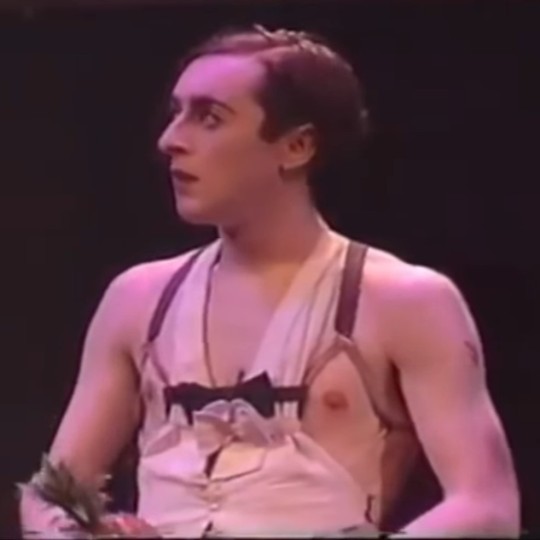

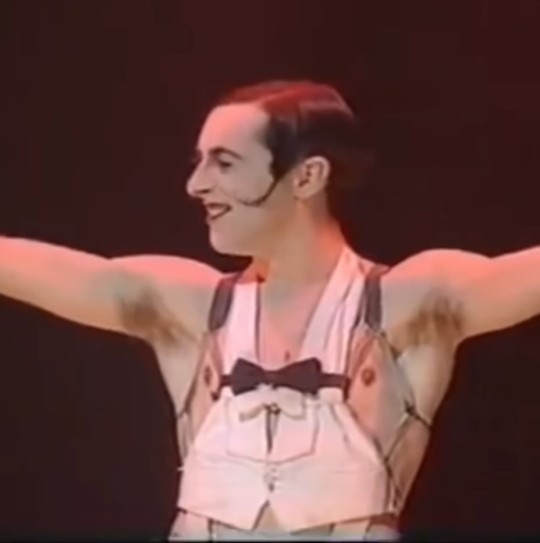
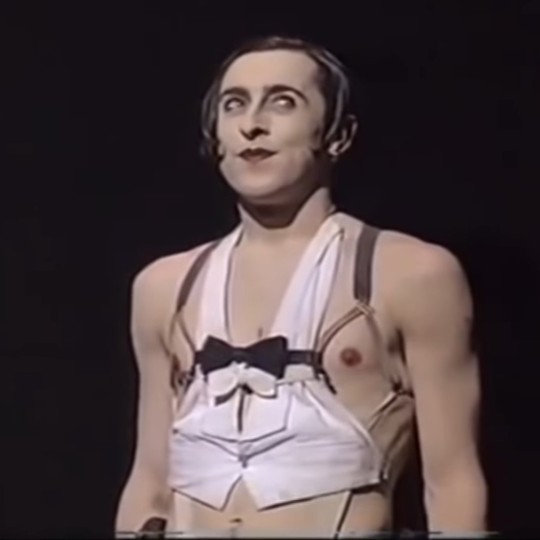




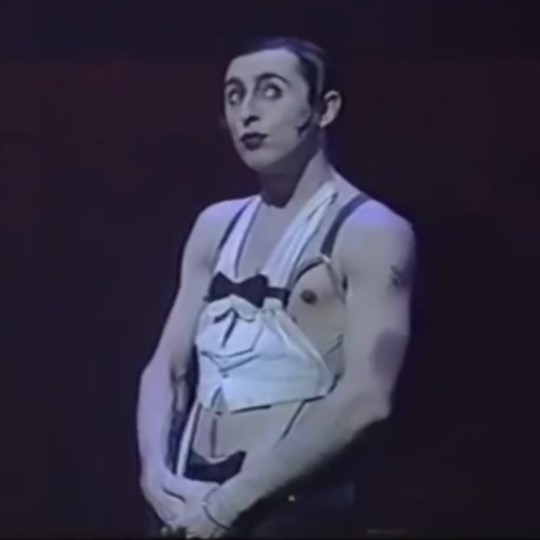
alan cumming as the emcee in cabaret 1993 <3
#yeah i just wanted to post a compilation of the 1 signature costume#alan cumming#cabaret 1993#HELP ME!!!!!!!! hhhhh#emcee#cabaret#thinking about him aaaaaall day like some kinda sicko!!!#my screenshots#<<<<need to take 1 billion more tbh#THIS GUY IS UNREAL. truly maddening stuff
12 notes
·
View notes
Text
Irina Romanova and Igor Yaroshenko Free Dance, 1994.
Cabaret by John Kander.
#so fun & cute & one of the greatest costumes that year#ice dance#figure skating#irina romanova#igor yaroshenko#cabaret#john kander#1994#1990s
52 notes
·
View notes
Text

Costumes from the Cabaret revival (1998)
20 notes
·
View notes
Text

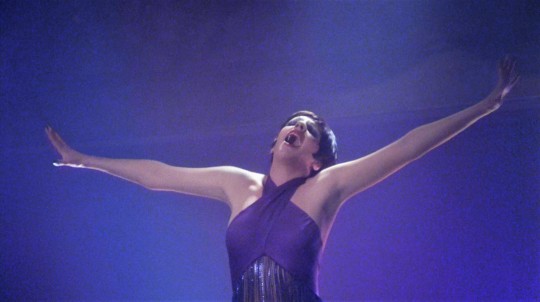
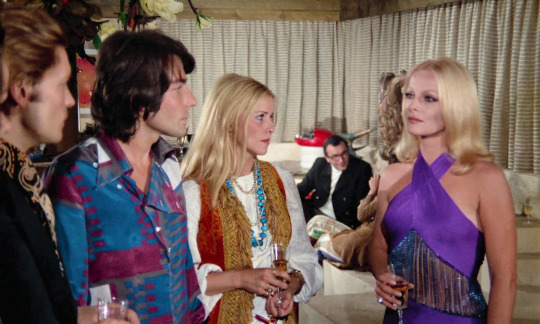
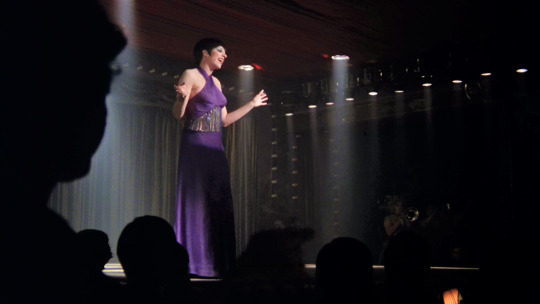
"Un Beau Monstre" (1971) - "Cabaret" (1972)
Last night I watched the 1971 French/Italian Helmut Berger movie "Un Beau Monstre" (US title: "Love Me Strangely") ...and in a pivotal scene, in walks the exquisite Virna Lisi wearing the dress I'd heretofore always thought of as "Liza Minnelli's 'Cabaret' Dress"! That's Liza Minnelli, of course, on the right singing the title number in 1972's "Cabaret" wearing the very same signature gown a year after it was worn by Virna Lisi in a film most people probably have never heard of.
The gown is by French fashion designer Loris Azzaro and is titled "Gilda" (he designed a collection of gowns named after famous film stars or iconic roles) and was sold at his Paris boutique in 1970-71.
#costume design#cabaret#liza minnelli#gown#kit kat club#virna lisi#un beau monstre#love me strangely#helmut berger#reused costumes#bob fosse#loris azzaro#fashion design#who knew?
142 notes
·
View notes
Text


marlene dietrich in der blaue engel (1930) + alan cumming in cabaret (2014)
#I have a whole essay on the significance of the replica costume here but I’m just gonna leave the photos for now#I’d give a tldr but it’s sort of hard to sum up#like it’s very multifaceted. serves a purpose in the narrative both literally and metaphorically . n all that#had this figured out for a while but was only able to get a picture of specifically the matching poses recently#thanks official fire island instagram account#for the. as of yet unseen cabaret (2014) footage#sanders bullshit#musical theatre#film history#cabaret#the blue angel#cinematic parallels. I guess#can you even call it a parallel at this point
30 notes
·
View notes
Text
Cabaret in the west end review/observations @steeple-sinderby-wanderers
Full disclaimer: my previous exposure to cabaret is limited and I also had no idea who the cast were (self esteem and the guy from scissor sisters) I have read Goodbye to Berlin though and am very interested in the period.
If you are in the stalls, particularly if you are at a table, it is quite an immersive performance, the ensemble are literally up in your face at times. I did not sign up for that, it just happened to be where the wheelchair seats were and it's not necessarily my favourite way of doing theatre, I find it takes me out rather than brings me in, but it is a necessary part of the show particularly for 'if you could see her'
The atmosphere is incredible, though part of that may have been where I was sitting (I don't know whether all of the pre show is available to people in the galleries) but it did do a lot to build up the setting. The cast is fantastic.
The costumes are extremely stripped back (as in they're literally underwear for the majority of the cast). Though it does change in the second half to evoke lederhosen and drindls in reflection of the changing atmosphere of Berlin (I suspect it and the bavarian sounding 'tomorrow belongs to me' is because the stereotypical german is (somewhat ironically) bavarian but I think it can be interpreted in regards to the Nazi's attempt to appeal to and create a german folk culture that isn't nearly as uniform as it is)
Emcee was brilliant. Like I said I had no idea who he was, nor the actress playing sally and I think I preferred it that way. Obviously he's at the centre most of the times he's on stage but you still struggle to take your eyes of him. They went very hard on the idea of Emcee as the spirit of Berlin. His costumes get more and more Nazi like as the play goes on ending in a brown suit and very 'normal' looking.
speaking of, Ernst is extremely affable even after it's revealed he's a Nazi which really hammers the purpose of his character home.
Fraulein Schneider and Herr Schultz almost stole the show. They were magnificent, their romance was so sweet and tender and very much felt like the heart of the show. It's reluctant break up is gut wrenching and is even more so by the fact that it's so obviously inevitable due to Fraulein Schneider's firmly established pragmatism.
Sally was very brash and confident, she had a sturdiness to her. She kind of had a private school horse girl vibe if you get what I mean, kinda Clare balding like in her mannerisms. I don't think she was played nearly as naive as she can be played. Many of her actions came off far more as a single minded almost desperation to just keep going and surviving and living how she wants to. She's not really succeeding and there's a real vulnerability to her but hey fake it till you make it.
I think this makes Sally's decision to stay in Berlin a little less selfish and naive. In their confrontation before her abortion, Clifford is almost violent towards her and combined with the androgyny of the cast and costumes, including Sally's costume for 'Cabaret' (a brown trousers and blazer over her lingerie) makes Clifford come across as, to Sally, just another controlling, oppressive force. Sally is clinging onto the ruins of Weimar Berlin because it is the only place she can be free and independent. Of course there is still a lot of selfishness and naivity in that but it's framed slightly differently if that makes sense. Her ignorance is exceedingly deliberate, just as much as Herr Schultz's or Frau Schneider's pragmatism.
Clifford also seems naive, if not politically per say then personally, particularly because his and Sally's relationship is actually presented as almost asexual. They never even kiss but Clifford does kiss one of the Cabaret boys with whom he has much more chemistry and it perhaps suggests that this life with Sally Clifford wants is as much a manifestation of his internalised homophobia as anything else. I find the more I think about it the more this makes me a little uncomfortable, for all this is an apparently queer production it still reduces bisexuality to an erotic spectacle without actually engaging with it while playing into the idea that all bisexual men are actually gay
Clifford himself remains very much an outsider. His costume for example remains very masculine and quite formal to the point where it's something of a visual indicator of his outsider status even as it conflicts with his actions and what we're told he's doing.
Overall it was amazing and I highly recommend it (in the galleries as good as it is 200 quid (not even the most expensive seat) for one seat is a bit much)
#apologies for the sheer amount of costume analysis blame the last 16 or so years of living with my sister#cabaret#cabaret 2021
8 notes
·
View notes
Text
desire’s season two wardrobe should just be various garments swiped from cabaret productions mason has been in
#doesn’t have to just be the emcee’s costumes either. sally and the cabaret girls are fair game#desire of the endless#mason alexander park#the sandman netflix
19 notes
·
View notes
Text

Vintage art advertisement for Dr. Mabuse, the Gambler (1922) featuring Aud Egede-Nissen's Cara Carozza.
#aud egede-nissen#dr. mabuse the gambler#dr. mabuse der spieler (1922)#cara carozza#1920s#fritz lang#classic film#silent film#german cinema#weimar cinema#art#vintage ad#vintage art#I love carozza's cabaret costume#my post
11 notes
·
View notes
Text
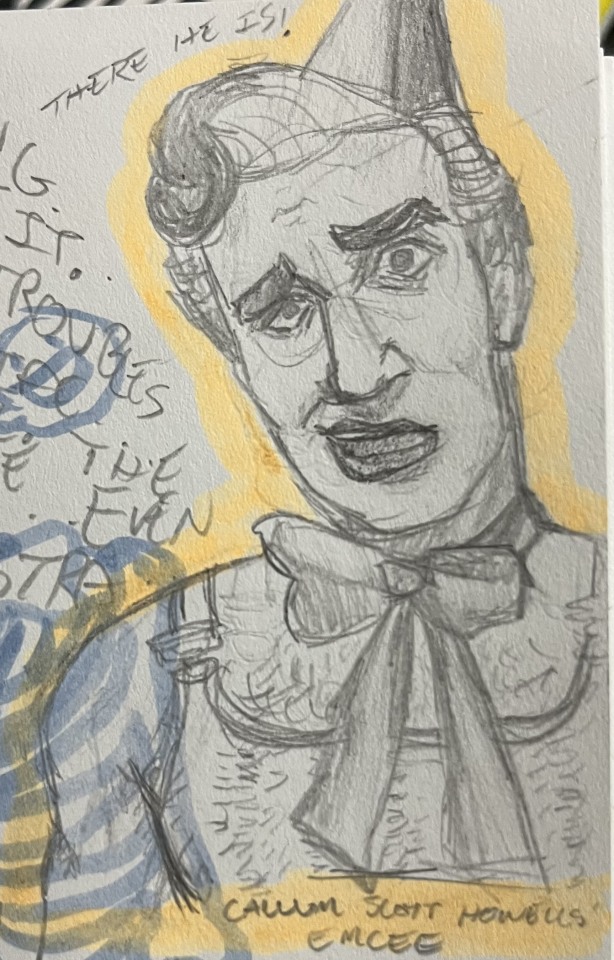


so I've been really in to cabaret recently
#Cabaret#emcee cabaret#emcee#sally bowles#my art#sketchbook#sally bowles cabaret#I've been watching the wilkommen/dont tell mama BBC video over and over I LOOOOOOOVE THE COSTUMES AND THE CHOREO SO MUCH AND MADELINE AND#CALLUM ARE SO FUCKING GOOOOOOOOOD Im crying. actually
13 notes
·
View notes
Text
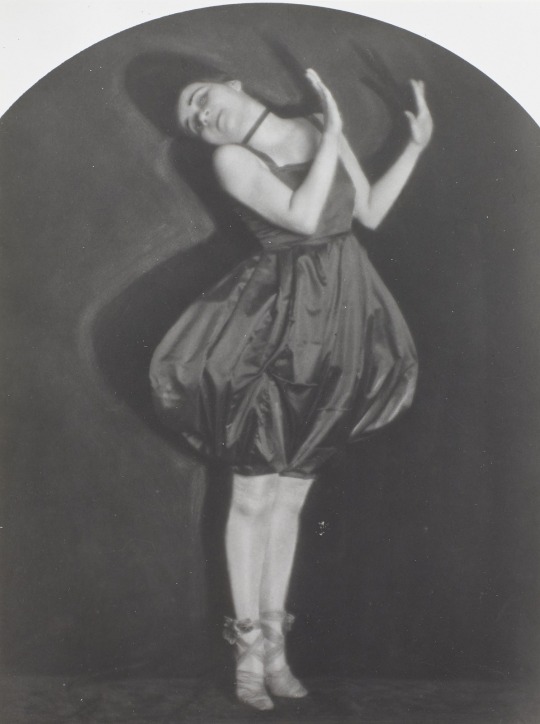
Karl Schenker :: Valesca Gert (Tänzerin), 1916. | src Deutsche Fotothek
view on wordPress
#valeska gert#Karl Schenker#danseuse#cabaret artist#dance costume#role portrait#dance pose#tanzpose#Tänzerin#cabaret dancer#danzatrice#bailarina#full length portrait#weimar republic#Karl Schencker#dancer#Rollenporträt#1910s#Atelier Karl Schenker#rollenportrat#valesca gert#waleska gert
54 notes
·
View notes
Photo
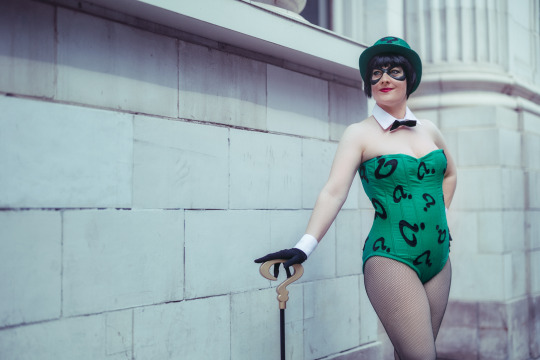





"Where Does A 500-Pound Gorilla Sleep?"
Riddler - Cabaret Inspired Original design I've always wanted to make a bunnysuit.
I don't tend to go for sexy costumes, but this one is pretty body positive without being overly bare skin.
Photos by Brett Bauer Photography
21 notes
·
View notes
Text

just let me fall out the window with confetti in my hair
#sanders art tag#god you do not want to know how fucking long this took#there’s some fun details tho. the costume is modeled after a historical one I like a lot#n emcee’s dress pattern is on the cradle + coffin#cabaret#sally bowles#fanart#musical theatre
18 notes
·
View notes